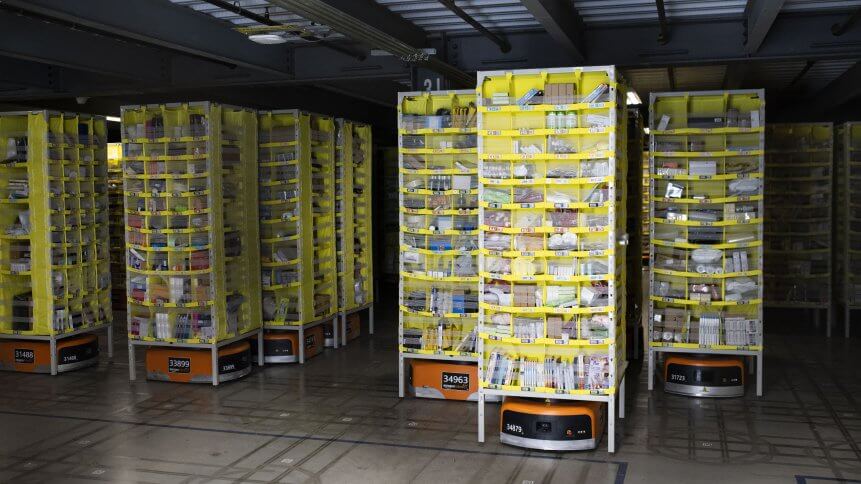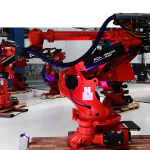
- Robot technology is being used in industrial warehouses and factories, stacking shelves, picking items off conveyor belts, and sorting and transporting packages around various facilities
- According to Valuates Reports, the global robotics market size is expected to reach US$ 149,866.4 million by 2030
- Robot technology is becoming more commonplace in the manufacturing industry, but experts have said it’s not replacing human workers anytime soon
Automation and machine learning have been steadily making their way into distribution centers, in the US and elsewhere, as companies look to improve efficiency.
The logistics industry is under pressure to keep up with growing consumer demand as the world’s labor base shrinks. Logistics operators are looking to automation, including robotics, to fill in the gaps and help handle the workload.
Robots used in industrial warehouses and factories
Robotics has moved on from the assembly lines of car manufacturers to various roles. According to Valuates Reports, the global robotics market size is expected to reach US$ 149,866.4 million by 2030.
Indeed, robots are now being used in industrial warehouses and factories, stacking shelves, picking items off conveyor belts, and sorting and transporting packages around various facilities. The addition of robotics to a warehouse or factory is an effective way for companies to save money by reducing labor costs while increasing productivity.
Automated picking is an integral part of the supply chain. Automated systems are designed with various functions in mind, such as safety, accuracy, efficiency, and ergonomics. The technology also enables a more flexible deployment than conveyor belt-based solutions.
With automated picking systems processing 20 million orders per year to date, Amazon seems to be leading the way forward with its Kiva robots. The company has been rolling out more and more robots to increasingly automate its warehouse business, This comprises more than 200,000 mobile robots working inside its warehouse network alongside its human counterparts to move inventory around.
Interest in robot picking surge during pandemic
Robotic picking is an exciting development that could revolutionize the warehousing industry, making them more efficient. As costs drop and exponential improvements in software capabilities increase speed and precision, industrial robots have gone from being expensive novelties to serious business assets.
With the help of advanced robotics, some businesses are deploying high-tech mechanical arms to do jobs that have traditionally required human labor. The robotic arm can lift and move packages to workers for packing or shipping and handle other manual tasks such as sorting items from shelves.
An example of companies using this technology is GXO Logistics. This American global contract logistics company uses a robotic arm equipped with camera vision to help speed up order fulfillment processes at one of its warehouses.
New robotic features and functionality in the US market
A few companies that have introduced new robotic features and functionality into the US supply chain and warehousing market are RightHand Robotics, Fetch, and 6 River systems.
RightHand Robotics, based in Somerville, Massachusetts, is revolutionizing the warehouse industry with a new breed of autonomous robots. Its arm can identify and pick items of many sizes and shapes, including mixed bins.
Meanwhile, Fetch produces a cloud-driven autonomous mobile collaborative robot (cobot) with multiple payload platforms. Based in San Jose, California, the bots rely on a cloud-based platform and can be set up to work within hours of arrival.
In 2019, Shopify acquired 6 River Systems to increase its warehouse work efficiency. The cobot named Chuck directs the pickers to the correct items, and saves workers walking time by going directly to them.
Robot technology is not replacing human workers
Robot technology is becoming more commonplace in the manufacturing industry, but experts have said it’s not replacing human workers anytime soon. In fact, despite fears that robots would soon replace human workers, hundreds of thousands of new jobs are being created every year.
The technology is not yet advanced enough to completely take over many more complicated tasks humans perform. Instead, it’s main role over the next half-decade, will be used to help humans do their jobs better and faster.










